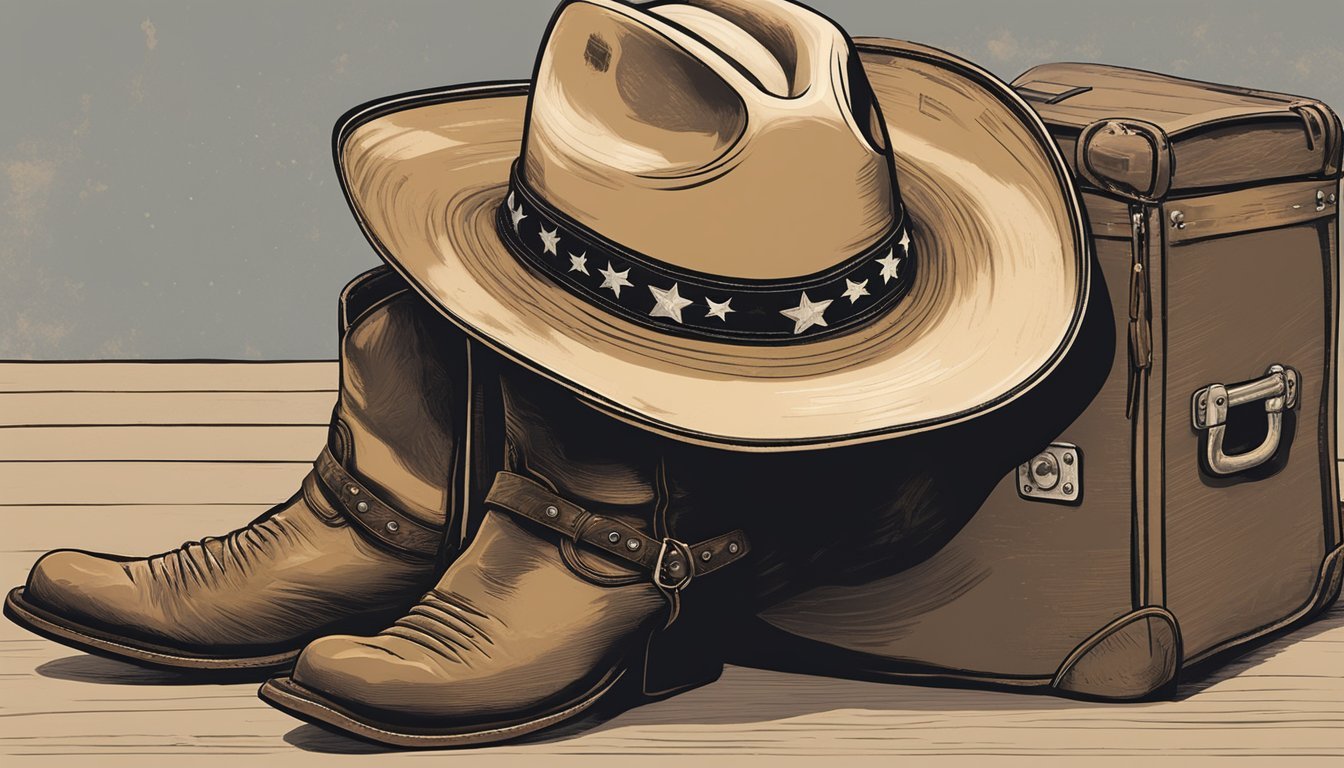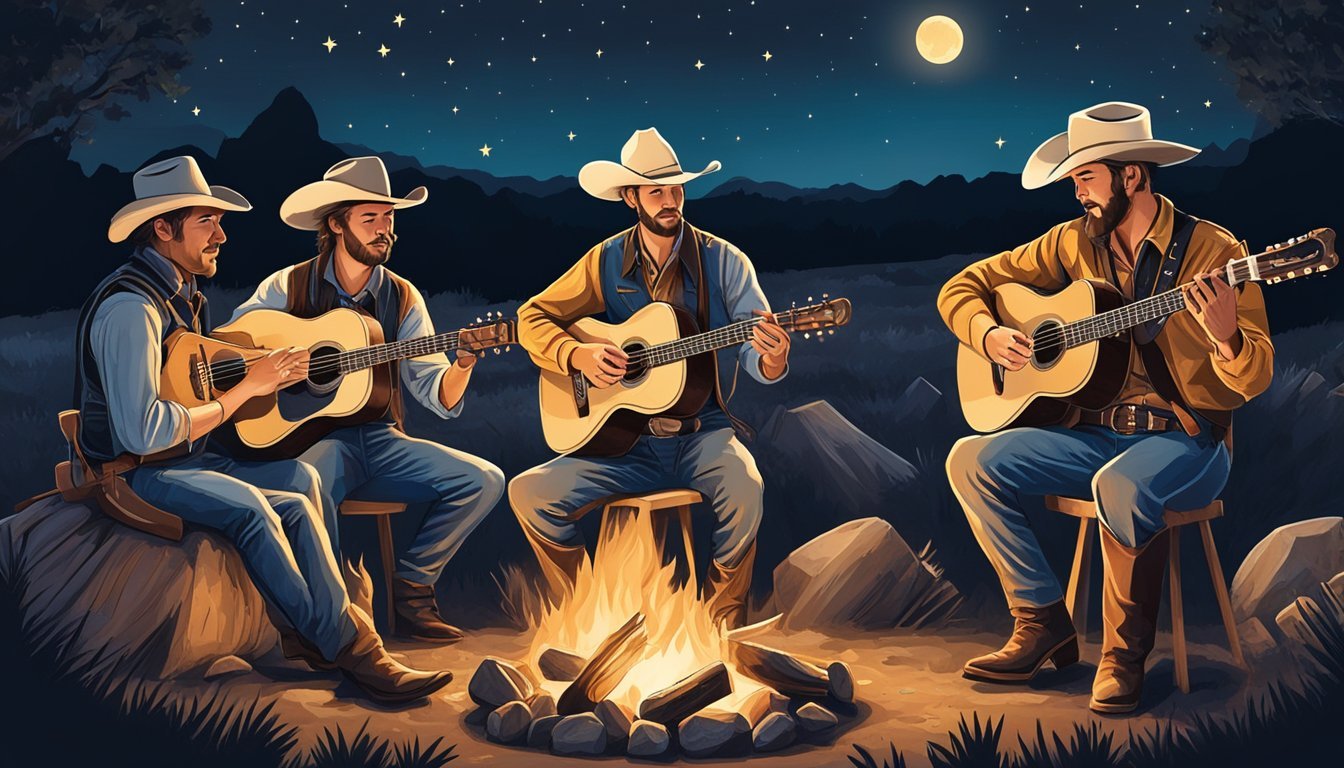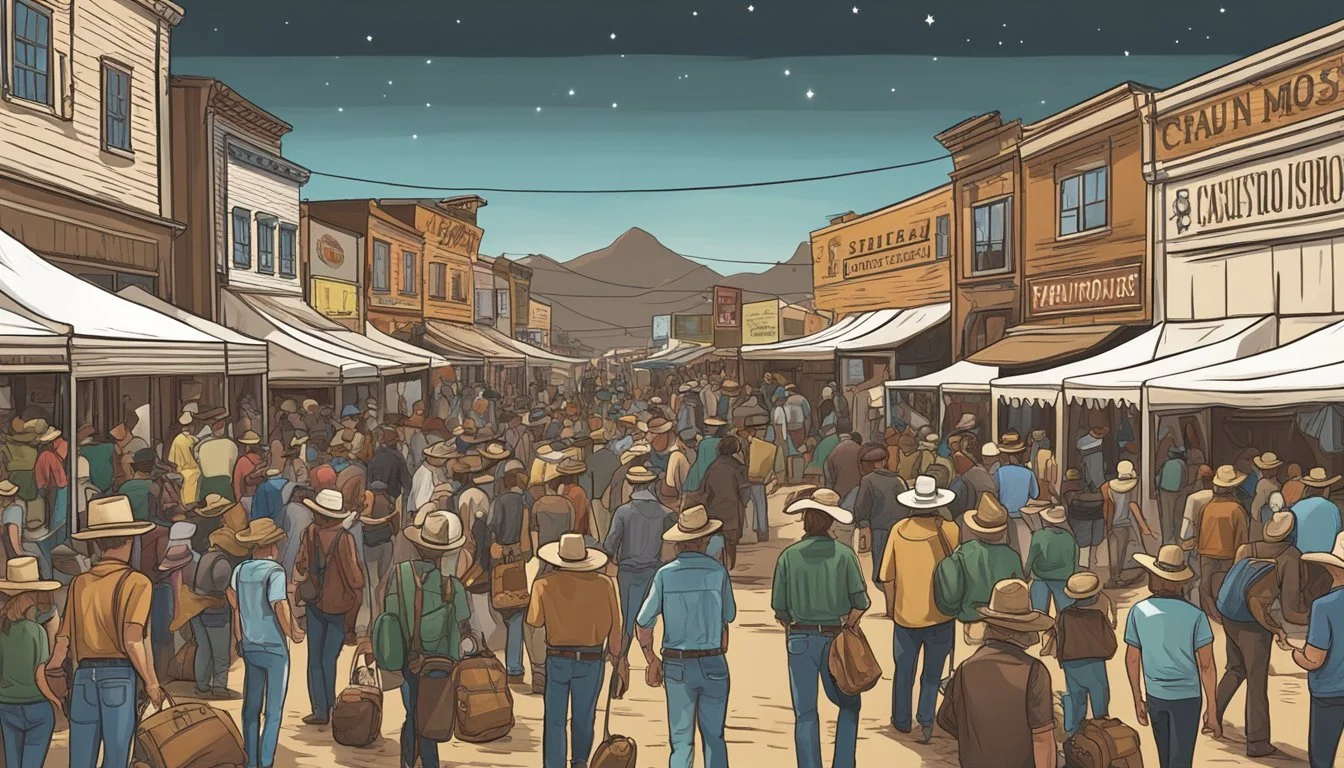The Texas Cowboy's Guide to Country and Western Music History
An Expert Overview
Country and Western music, particularly from the Texas region, carries a rich tapestry of sounds and stories that has significantly shaped American musical culture. The genre has deep roots in the Lone Star State, where it evolved from a convergence of various musical traditions, including the early settler ballads, ranchera music of Mexico, and Western swing. These traditions reflect the diverse history of Texas and are inextricably linked to the image of the cowboy, which has become a symbol of American folklore. Texas has been a critical incubator for the genre, blending sounds from its diverse communities such as Czech and German immigrants, which have influenced the polka and waltz elements found in Texas country music.
Over the years, the cowboy figure has been pivotal in the popularization of country and Western music, carrying the essence of Texas's cultural identity. Hollywood has played a role in romanticizing the cowboy image, intertwining it with the sound of country music. This relationship further cemented the cowboy as a central and enduring figure in the genre. Local Texas venues like Kent Finlay's Cheatham Street Warehouse have fostered this music, nurturing the careers of many influential artists. From honky-tonks to dance halls, these spaces have served as cultural hubs where country and Western music could thrive and be shared with new audiences.
Moreover, the influence of charismatic figures such as the "Cowgirl Accordionist" indicates the gender diversity within the genre and how individual artists have contributed to the unique sound that defines Texas country music. Country and Western music continues to evolve, representing a dialogue between the old and new, tradition and innovation. Nonetheless, the cowboy's influence remains steadfast, ensuring that the spirit of Texas will always be a heartbeat in the music that resonates with fans across the globe.
Origins of Cowboy Music
Cowboy music, deeply rooted in the rich tapestry of the American West, originated from the daily lives and hardships of cowboys. This musical tradition, reflecting their values and stories, has become an enduring genre within folk music.
Historical Development
Originating in the 19th century, cowboy music developed from the convergence of various musical traditions brought by settlers and cowboys in the American West. It drew from the folk ballads of the British Isles, African American blues, Spanish influences, and Native American music. Cowboys often performed songs to keep the cattle calm and for their entertainment during long journeys on the cattle trails.
Key Influences:
Folk ballads from British Isles
Blues from African American culture
Spanish musical elements
Native American soundscapes
Cowboy songs emerged as cowboys' work-related calls and ballads, narrating tales of cattle drives, the beauty of the open range, and the challenges faced by those living on the frontier.
Influence of Western Culture
Western culture, encompassing the myths, ideologies, and the way of life that flourished in the American frontier, left a significant mark on cowboy music. The romanticized image of the cowboy as the rugged and independent figure of the West was reflected in the lyrics and themes of cowboy songs. The evolution of the cowboy into a cultural icon was supported by the music that captured the essence of cowboy life.
Cultural Reflections:
Independence and resilience of the cowboy
Romantic vision of the American frontier
Cowboy lifestyle and values
Cowboy music, therefore, became a vessel for expressing the cultural identity of the American West.
Evolution of Cowboy Songs
Cowboy songs are a dynamic form of folk music that has evolved over time, incorporating contemporary stories and sounds while also preserving historical narratives. Early cowboy songs were simple, often with just a verse and a chorus, and were sung without instrumentation on the open range. As time progressed, these songs became more structured and were accompanied by instruments like the guitar.
Development Stages:
Early form: Simple structures, minimal instrumentation
Later form: Structured songs, introduction of guitar and other instruments
From their inception, cowboy songs have been adapting, reflecting the changes of the times while remaining a vibrant part of America's cultural heritage.
Iconic Cowboy Musicians
The landscape of country and western music history is marked by the indelible influence of iconic cowboy musicians. These artists blended the romance of the West with musical storytelling, paving the way for the genre's evolution.
Gene Autry's Legacy
Gene Autry, known as the "Singing Cowboy," was a pioneer in country music, leaving a legacy that resonates to this day. He recorded hundreds of songs, starred in dozens of films, and was a savvy media personality. Autry's contributions were recognized with inductions into both the Country Music Hall of Fame and the Hollywood Walk of Fame, testaments to his status as a cultural icon.
Roy Rogers and the Sons of the Pioneers
Roy Rogers, alongside his band, the Sons of the Pioneers, brought a new dimension to cowboy music with their rich harmonies and Western ballads. They created a sound that was both unique and traditional, resonating with the spirit of the American frontier. Rogers, too, has been honored with stars on the Hollywood Walk of Fame for his contributions to radio and film.
The Influence of Tex Ritter
Tex Ritter's deep, resonant voice made him one of the most influential figures in the genre. His music is an embodiment of the cowboy spirit, and he left an indelible mark on country music. Ritter's legacy includes a place in the Country Music Hall of Fame, highlighting his significant contributions to the genre.
Patsy Montana and Female Contributions
Patsy Montana broke barriers for women in country music with her yodeling prowess and cowboy tunes. Her best-known song, "I Want to Be a Cowboy's Sweetheart,” became the first female-sung country song to sell over one million copies. Montana's influence paved the way for subsequent generations of female cowgirl musicians.
Country and Western Music in Film
Country and Western music has played a significant role in film, particularly through the iconic representation of singing cowboys. These films blended Hollywood cinematography with Western themes, often highlighted by the performances of charismatic singing cowboys.
The Rise of Singing Cowboy Movies
During the 1930s and 1940s, the genre of singing cowboy movies rose to prominence. Audiences were introduced to a new kind of hero—a cowboy who could both ride and sing. These films often featured actors like Gene Autry and Roy Rogers, whose musical talents were integral to their on-screen personas. In 1934, the movie "In Old Santa Fe" became one of the earliest films to incorporate a singing cowboy, setting a precedent for the numerous films that followed.
Hollywood's Portrayal of the West
Hollywood's portrayal of the West was romanticized and stylized through the singing cowboy movies. The films depicted an idealized version of Western life, complete with scenic backdrops and adventurous plots. Imbued with Western themes, these movies offered escapism and entertainment, cementing the image of the cowboy as a central figure in American folklore and culture.
Monogram Pictures and Republic Pictures
Monogram Pictures and Republic Pictures were two significant studios that contributed to the popularity of singing cowboy movies. During the height of the genre's popularity, both studios produced numerous films featuring singing cowboys, solidifying the genre's cultural impact.
Monogram Pictures: Known for their low-budget productions, Monogram delivered a variety of singing cowboy films that were well-received by audiences of the time.
Republic Pictures: Established a reputation for slightly higher-budget productions and became synonymous with the singing cowboy genre, housing stars like Gene Autry and Roy Rogers.
Cultural Impact and Legacy
The cultural impact and legacy of Texas cowboy music are entrenched in the vivid storytelling and preservation of a uniquely American way of life. These songs serve as oral histories, capturing the heart of the cowboy experience, and continue to resonate with audiences, influencing contemporary music genres.
Songs as a Reflection of Cowboy Life
Cowboy music has historically mirrored the rugged life and spirit of the cowboy. Songs like "Home on the Range" and "Tumbling Tumbleweeds" encapsulate the wide-open spaces and the essence of freedom that defined the cowboy lifestyle. These lyrics not only served as entertainment but also as a medium for storytelling and preserving the lore of the West.
Preservation of Cowboy Music
The anthology "Cowboy Songs and Other Frontier Ballads", collected by John A. Lomax, was instrumental in preserving the rich tapestry of cowboy music. Lomax's dedication to collecting and cataloging these songs has ensured that they remain an enduring part of America's cultural heritage, accessible for generations to appreciate and study.
Contemporary Influence
Cowboy music has left its mark on modern country and western genres. Songs like "Back in the Saddle Again" and "Riders in the Sky" have shaped the sound and narratives found in today's music. The themes of open spaces, personal freedom, and adventure continue to influence new artists, highlighting the timeless appeal of the cowboy's story.
Regionalism in Cowboy Music
Cowboy music, an iconic symbol of American culture, encapsulates regional influences that have shaped its evolution. From Texas's Tioga roots to the yodeling cowboys of Oklahoma, each area has contributed distinct flavors to this historical genre, tying cowboy tunes closely to the heritage and stories of the American West.
Texas Cowboys and Tioga Roots
In Texas, the legacy of cowboy music is synonymous with the state's rich history of cattle ranching and the vaquero traditions. The city of Tioga itself adds a specific resonance to the genre, as it is the birthplace of the legendary "Blue Yodeler," Jimmie Rodgers. His influence on cowboy music is inextricable, with Rodgers's blend of blues and yodeling setting the benchmark for the Texan cowboy sound. Songs like "The Old Chisholm Trail," which echo the experiences of cowboys during the long cattle drives, serve as a testament to the state's musical ingenuity.
Oklahoma and the Southern Influence
Oklahoma's style of cowboy music integrates Southern elements, creating a crossroads of cultural sounds. The state celebrates its particularly unique heritage through the figure of the Oklahoma yodeling cowboy, exemplifying a melding of indigenous, cowboy, and Southern motifs. Such yodeling, initially influenced by European settlers, is imbued with the Southern twang of Oklahoma, creating a distinct southern flavor within the broader Western music tradition.
Western Music's Spread Beyond the American West
Western music, while rooted in the experiences of the American cowboy, did not remain confined to the American West. Across the breadth of North America, the values, stories, and sounds of the Western cowboy lifestyle found resonance. Influential musicians carried the sound beyond the Rocky Mountains and prairies, into the mainstream and across borders. The genre's spread is a testament to its appeal and ability to tell a universal story of adventure, hardship, and freedom.
The Crossover of Hillbilly and Western Music
The convergence of hillbilly and western music shaped a distinct genre that captivated America. This transformation gave birth to western swing, an amalgamation that infused hillbilly roots with new vibrancy.
Early Hillbilly Music Influences
The style often referred to as "hillbilly" music laid the groundwork for what would become western swing. This form of music typically included string instruments such as the fiddle and banjo, and its origins trace back to the Appalachian region. These early tunes held stories of rural life, combining elements of folk and traditional music from early settlers.
Instruments: Fiddle, Banjo, Guitar
Themes: Rural life, hardship, tradition
Interchange Between Genres
As the interest in hillbilly music spread, it intersected with the cowboy culture of the West. Musicians began to blend the narrative-driven hillbilly tunes with the rhythms and instrumental stylings more typical of western cowboy music. The interchange brought forth a playful, danceable beat, setting the stage for an innovative sound.
Cowboy music influences: Guitar, storytelling
Dance rhythms: Evolved from cowboy ballads to up-tempo beats
Rise of the Western Swing
By the 1930s, western swing emerged prominently in Texas, marked by its high-energy sound that encouraged dance and merriment. Pioneers like Bob Wills and Milton Brown were instrumental in forming and popularizing the genre, leading bands that combined the fiddle's twang with the pulse of drums and the strum of steel guitars. Artists like Marty Robbins would later bring their own flair to the genre, ensuring its legacy in country music history.
Marty Robbins: Merged western swing with Nashville sound
Key elements: Fiddle, steel guitar, drums, dance-centric rhythms
Commercialization and Mainstream Success
The genre's journey to widespread acclaim was marked by influential artists, critical industry shifts, and global events that propelled country and western music into the American mainstream.
The Road to Popularity
Country and western music's path to becoming a staple in American culture was paved by standout artists who transformed the genre from niche to widely recognized. Gene Autry, known as "America's Favorite Cowboy," catapulted cowboy music to the national stage, not just through his radio presence but also via the silver screen. His starring role in "Tumbling Tumbleweeds" was a significant moment, blending cinematic storytelling with country tunes, and thus fostering a new dimension of fan engagement.
Music Industry's Role
Record labels played a pivotal role in the commercialization of country and western music. Victor Talking Machine Company, headquartered in Chicago, was instrumental in bringing country music to a wider audience. By recording and promoting songs that captured the essence of the western lifestyle, they crafted an image of the cowboy that resonated with listeners across America. It was the strategic marketing and distribution of these records that turned country and western music into a commercial success story.
World War II's Effect on Western Music
World War II had an unexpected impact on popularizing country and western music. The global conflict fostered a sense of unity and nostalgia among Americans, who found comfort in the patriotic and sentimental themes of western music. Additionally, the establishment of the Los Angeles Angels, a Major League Baseball team, further promoted this musical genre. With games being a favorite American pastime, the team helped enhance the genre's popularity, tapping into the patriotic spirit of the era by using country and western motifs to promote national pride during and after the war.
Cowboy Music's Modern Evolution
Cowboy music has seen a significant transformation as it has adapted to modern tastes, experienced a nostalgic revival, and been influenced by contemporary country singers, who often pay tribute to western stars while blending traditional elements with modern attitudes and sounds.
Adaptation to Modern Tastes
Through the 20th century, cowboy music underwent a journey of adaptation to stay relevant to the evolving music scene. The genre's traditional acoustic sounds found their way onto Tin Pan Alley, embracing a wider audience. Country singers began to incorporate electric instruments, leading to new subgenres that maintained the cowboy spirit while appealing to the broader tastes of the modern listener. This included styles like honky-tonk, which presented a grittier, more rhythmic evolution of the cowboy tune.
Revival and Nostalgia
The allure of the cowboy lifestyle and its symbolic representation of freedom and the frontier led to a cultural resurgence in the 20th century. Western stars like Gene Autry crafted an idealized cowboy image, epitomizing virtues of the Old West through music and film. Their work spurred a wave of nostalgia, reviving traditional cowboy songs and creating a vintage aesthetic that resonated with audiences yearning for the simplicity and heroism of the past.
The Role of Modern Country Singers
Modern country singers play a pivotal role in redefining and preserving cowboy music. Artists selectively draw upon the rich heritage to create contemporary works that honor the legacy of cowboy music. These musicians often balance respect for tradition with current trends, addressing the modern listener's taste while keeping the attitude and storytelling of the genre alive. They stand as torchbearers, ensuring cowboy music's relevance in today's cultural landscape, continually influencing and steering the genre's path forward.
Iconography and Symbolism in Cowboy Culture
Cowboy culture is rich in iconography and symbolism, shaped by historical figures, Western landscapes, and the cowboy's role in American society. Each symbol carries with it a narrative of the cowboy's work, environment, and ethos.
Visual Representations
Visual motifs in cowboy culture often depict open natural landscapes associated with the American West. These images typically include horses, signaling the bond between cowboy and steed vital for daily tasks. Additionally, figures such as Buffalo Bill and the advent of Wild West shows have solidified the cowboy's place in entertainment, creating a romanticized concept of the West.
The Significance of the Rodeo
Rodeos, originally impromptu competitions between cowboys demonstrating their skillsets, have become emblematic events that encapsulate the competitive spirit and expertise in horsemanship. They celebrate the practical skills necessary for cowboy work such as roping and riding, blending tradition with entertainment.
Events like bronc riding highlight the cowboy's daring nature and physical prowess.
Rodeos often feature sentimental songs, embedding them within the cultural fabric of Western romance and nostalgia.
Cowboy Attire and Equipment
Cowboy attire and equipment are not only practical but also deeply symbolic. The cowboy hat stands as a ubiquitous symbol of Western identity, while spurs represent the cowboy's control and guidance of their horse, crucial for maneuvering the rugged terrain.
Hats: Wide-brimmed to shield from the harsh sun.
Boots: Designed with high heels to prevent slipping from stirrups.
Each piece serves a function yet collectively contributes to the iconic image of the cowboy, an embodiment of rugged individualism and a connection to nature.







